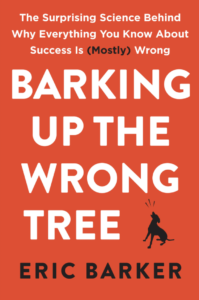1,000 true fans?
Kevin Kelly wrote about the importance of finding 1,000 people who will pay for what you make.
A True Fan is defined as someone who will purchase anything and everything you produce. They will drive 200 miles to see you sing. They will buy the super deluxe re-issued hi-res box set of your stuff even though they have the low-res version.
Paul Jarvis calls them his rat people:
Not literally “rat people”, unless rats really are your thing. I’m talking about the people that get what you do, appreciate it, and love you for it.
How do you get to 1,000 true fans? They’re going to be a subset of your wider audience. So you’ll need more normal fans. How many? Let’s take a look.
10,000 people who will read your work
You need people who check out your work regularly. They probably won’t pay for it, but they’ll give you some of their time. You can have a money-back guarantee, but you can never give readers their time back.
Let’s say they’re your mailing list subscribers. That’s a clear metric with a higher barrier than a Twitter follow or a YouTube subscribe.
How hard is it to find 10,000 people who when handed a free copy by a friend would actually read it? If you can’t give ‘em away for free, chances are you won’t sell very many
Okay, so how do you get there? Let’s go back to the other end. Not 1,000. Or even 100. Find an audience that could fit in your living room.
First, ten
Seth Godin says you should focus on finding ten people who trust, respect, need, and listen to you.
And if they love it, you win. If they love it, they’ll each find you ten more people (or a hundred or a thousand or, perhaps, just three). Repeat.
If the first ten share with another ten, you’ll get to 100 and if they share with another 10, you’ll get to 10,000.
The great thing about the first ten is that they’re also true fans. They’ve into your empty restaurant and enjoyed it. They took a risk and you didn’t waste their time.









 It took me three tries to remember his name has two Rs. I drew this while listening to Will Farrell’s appearance on the BS Report with Bill Simmons. I really liked this and it’s just another example of someone working very hard for many years before becoming an overnight success. From what I’ve read, I don’t think you end up on SNL without a ton of work. In Smartcuts, Shane Snow writes about how Jimmy Fallon became a cast member young relative to most cast members. Even he had to go through rejection and work very hard at it.
It took me three tries to remember his name has two Rs. I drew this while listening to Will Farrell’s appearance on the BS Report with Bill Simmons. I really liked this and it’s just another example of someone working very hard for many years before becoming an overnight success. From what I’ve read, I don’t think you end up on SNL without a ton of work. In Smartcuts, Shane Snow writes about how Jimmy Fallon became a cast member young relative to most cast members. Even he had to go through rejection and work very hard at it.